How to get bigger biceps at home In 2024
Introduction
Building stronger, bigger biceps doesn’t necessarily require a gym membership or expensive equipment. In fact, it’s entirely possible to achieve impressive results right from the comfort of your own home. The keyword here is convenience. Home workouts allow for flexibility in your schedule, eliminate travel time to the gym, and offer a private environment for those who prefer it. So, how to get bigger biceps at home? Stick around as we delve into effective bicep-building exercises you can do anytime, anywhere.
Bicep Anatomy 101
The bicep muscle, located in the upper arm between the shoulder and the elbow, is composed of two parts: the long head and the short head. Both heads originate from the scapula (shoulder blade) and combine to form a single muscle belly, which attaches to the forearm. Understanding this anatomy is crucial to effectively target and stimulate the biceps, leading to more efficient muscle growth.
The Science of Muscle Growth
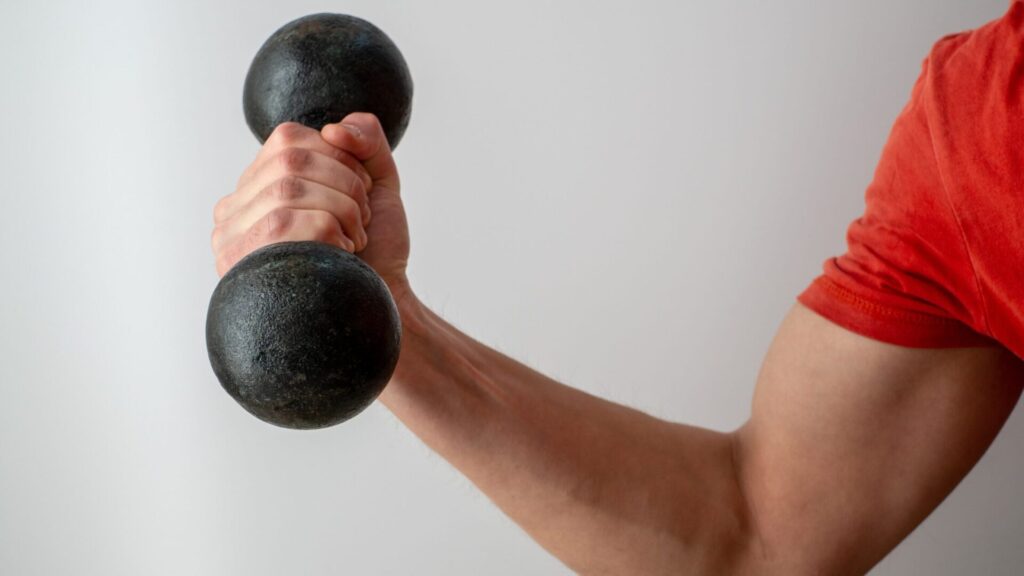
Muscle growth, also known as hypertrophy, occurs when the rate of muscle protein synthesis exceeds that of muscle protein breakdown. A variety of factors, including resistance training, nutrient intake, and rest influences this balance. Resistance training, such as bicep curls, cause microscopic damage to the muscle fibers. These damaged fibers then repair and grow stronger during rest periods, leading to muscle hypertrophy. Thus, a holistic approach incorporating targeted exercise, proper nutrition, and adequate rest is vital to achieving bigger biceps at home.
Equipment and Setup for Home Workouts
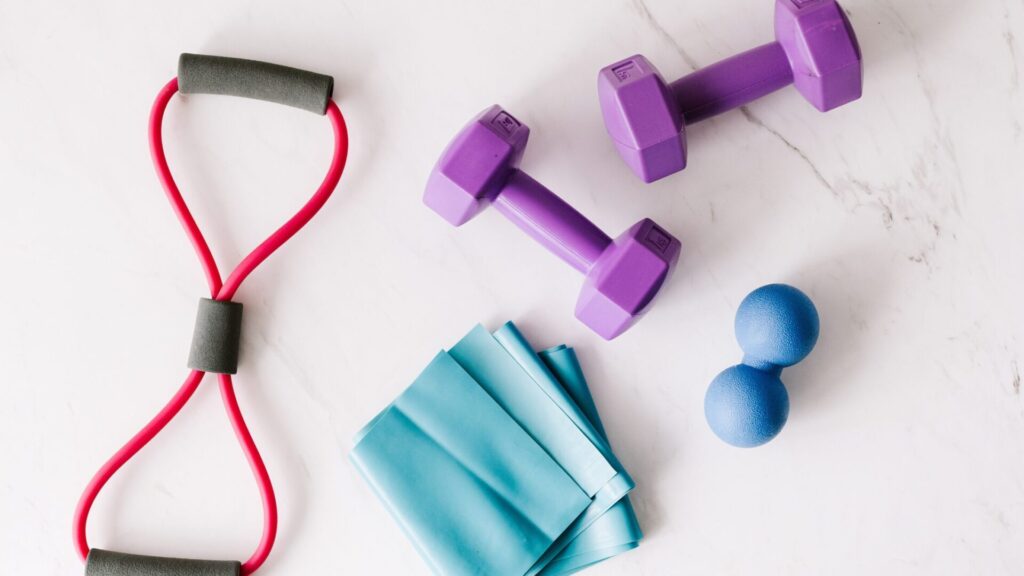
When it comes to bicep exercises at home, you don’t need a bunch of fancy equipment. However, having some basic fitness tools can make your workouts more effective and diverse. Here are some essential items you might want to consider:
Dumbbells
Dumbbells are versatile and easy to store, making them perfect for home workouts. They can be used for a wide variety of exercises, including the classic bicep curl. If you are just starting out, it’s a good idea to have a range of weights available so you can increase resistance as your strength improves.
Resistance Bands
Resistance bands are another highly versatile piece of equipment. They can be used to add resistance to a variety of exercises and are particularly effective for bicep curls. Plus, they’re lightweight and easy to pack, making them great for working out while traveling.
Pull-Up Bar
A pull-up bar might be a more significant investment, but it’s worth it if you’re serious about building your biceps. Pull-ups are one of the most effective exercises for targeting the biceps and can be done in the comfort of your own home with the right equipment.
Remember, the key to a successful home workout program is consistency. Having the right equipment at home can make it easier to stick to your routine and see results.
No Equipment? No Problem: Bodyweight and Improvised Workouts

If you don’t have access to any equipment, don’t worry – there are still plenty of ways to work your biceps at home.
Bodyweight Exercises
Bodyweight exercises use your own weight to provide resistance against gravity. Here are a couple of effective bodyweight exercises for your biceps:
Push-ups
While push-ups primarily target the chest and triceps, they also engage the biceps to a significant degree. Keep your elbows close to your body during the movement to increase the engagement of your biceps.
Isometric Pull-ups
If you have a sturdy horizontal bar or surface in your home (like a tree branch or a playground bar), you can do isometric pull-ups. Instead of performing the full pull-up motion, hold yourself in the ‘up’ position for as long as you can. This static exercise can be surprisingly effective at targeting the biceps.
Improvised Weights
Don’t have dumbbells? Get creative! There are plenty of everyday items around your home that can serve as improvised weights.
Water Bottles
Filled water bottles can make excellent makeshift dumbbells. The weight can be adjusted by varying the amount of water in the bottle.
Backpack
A backpack filled with books or other heavy items can serve as an effective weight for more resistance-intensive exercises.
Creating a Safe Workout Space at Home
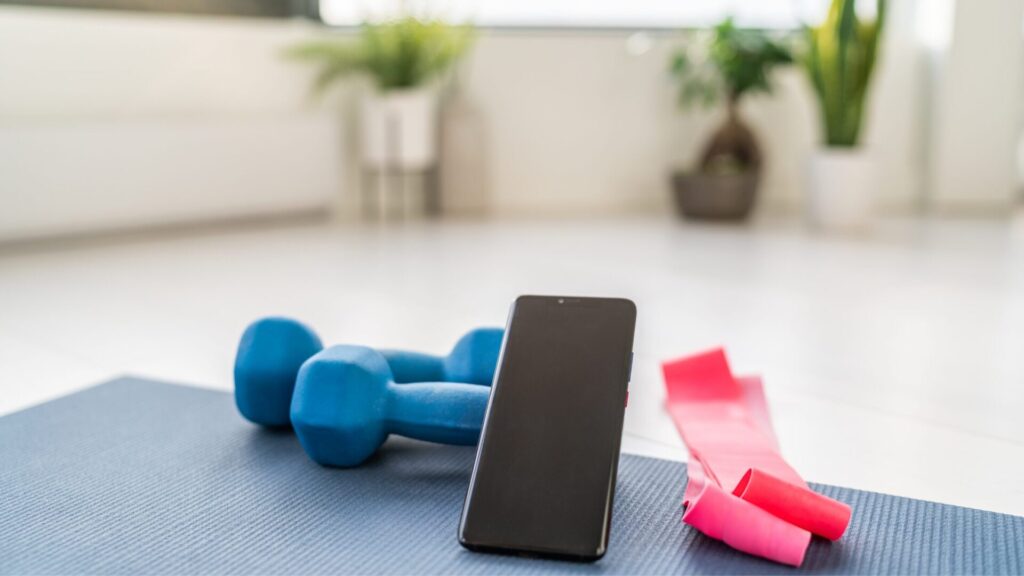
Safety should be a top priority when setting up your home gym. Here are some tips to help you create a safe and effective workout environment:
Space
Ensure you have adequate space for your exercises. Remove any potential hazards in the workout area such as loose rugs, sharp corners, or clutter that could cause trips or falls.
Flooring
Choose a non-slip surface to work out on. If your floor is slippery, consider investing in a yoga mat or exercise mat to provide traction and cushioning.
Ventilation
Good airflow is essential, especially for high-intensity workouts. If possible, open a window or use a fan to keep the room fresh and cool.
Good Lighting
A well-lit room not only makes it easier to see what you’re doing but can also help prevent accidents.
Equipment Storage
Store your equipment safely when not in use. Dumbbells, for example, should be kept in a secure place to prevent them from rolling and causing injuries.
Warm-up
Always include a warm-up session before diving into your routine to prepare your muscles and joints for the workout, reducing the risk of injury.
Cool-down
Don’t forget to cool down after every workout. This helps to gradually lower your heart rate and relax your muscles, minimizing muscle stiffness and soreness.
Remember that safety is just as important as consistency when it comes to working out at home. By creating a safe workout environment, you can focus more on your fitness goals and less on worrying about potential injuries.
Effective Bicep Exercises to Do at Home

Achieving the desired bicep growth can be accomplished with a variety of simple yet effective exercises. Here’s a list of exercises specifically targeting the biceps:
1. Standing Dumbbell Curl
This exercise is a classic bicep workout. Stand with a dumbbell in each hand, arms fully extended, and palms facing forward. Then, curl the weights while keeping your upper arms stationary, exhale as you perform this portion of the movement. Continue to raise the weights until your biceps are fully contracted and the dumbbells are at shoulder level.
2. Hammer Curl
The hammer curl is similar to the dumbbell curl but targets the brachialis, a muscle that lies underneath the biceps brachii. This movement also works the brachioradialis, a muscle of the forearm. Hold two dumbbells with palms parallel to each other. Maintain your upper arm positioning, and curl the weights while keeping the palms parallel.
3. Resistance Band Bicep Curl
This is the same as a standing bicep curl but uses resistance bands instead. Stand on the band and hold the other end with your hands. Now curl as you would with dumbbells. You can adjust the tension by spreading your feet wider.
4. Concentration Curl
Popularized by Arnold Schwarzenegger, the concentration curl isolates the biceps and can be done at home with a single dumbbell. Sit on a chair or bench, spreading your legs. Rest your arm holding the dumbbell on the same side leg, just below the knee, so the weight hangs down between your legs. Curl the weight, keep the elbow steady.
5. Incline Dumbbell Curl
This is a bicep curl variation that you can do while sitting on an incline bench. But if you don’t have a bench, any stable inclined surface will do. The trick is, it should allow your arms to hang down straight and shift all the work to your biceps muscles.
Remember, form and consistency are key for these exercises to be effective. Start with weights or resistance levels that are challenging but manageable, and remember to gradually increase as your strength improves.
Beginner Bicep Exercises
Bicep Curl with Bands
A great beginner-friendly exercise, the bicep curl with bands, is adaptable to all strength levels as the exercise’s difficulty can be easily adjusted by changing the band resistance level.
Instructions:
- Stand with feet hip-width apart on the center of the resistance band, holding the band’s ends in each hand.
- With palms facing forward, bend your elbows and curl your hands towards your shoulders.
- Lower your hands back to the starting position in a controlled manner. This is one rep.
Intermediate Bicep Exercises
Hammer Curls
Hammer curls target the biceps and provide variation to standard curls by working different muscle fibers.
Instructions:
- Stand upright with a dumbbell in each hand, arms fully extended, and palms facing your torso.
- Keep your elbows close to your body and make the forearms do the work. Curl the weights while contracting the biceps as you breathe out.
- Continue the movement until your biceps are fully contracted and the dumbbells are at shoulder level.
Advanced Bicep Exercises
Negative Curls
Negative curls focus on performing the lowering motion of the curl slowly and controlled. This technique applies more tension and induces muscle micro-tears that lead to increased muscle size as they repair.
Instructions:
- Start like a regular dumbbell curl – stand up straight with a dumbbell in each hand, arms fully extended, and palms facing forward.
- With your biceps contracted and at your shoulder level, slowly lower the dumbbells back to the starting position. This lowering phase should take about 3 to 5 seconds.
- Once your arms are fully extended again, repeat the movement. The key is to focus on the slow, steady lowering movement.
Workout Routines and Schedules
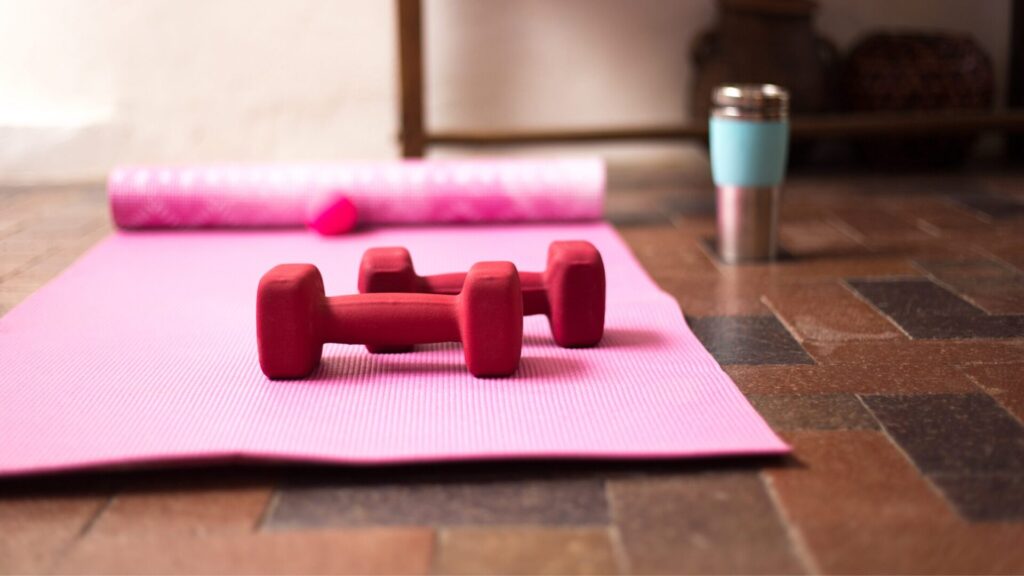
Creating a routine and sticking to a schedule are pivotal for successful muscle growth and development. Below are some workout routines that incorporate the exercises mentioned earlier:
3-Day Split Bicep Workout
Monday:
- Standing Dumbbell Curl: 3 sets of 8-12 reps
- Hammer Curl: 3 sets of 8-12 reps
Wednesday:
- Resistance Band Bicep Curl: 2 sets of 15-20 reps
- Concentration Curl: 2 sets of 8-12 reps
Friday:
- Incline Dumbbell Curl: 3 sets of 8-12 reps
- Bicep Curl with Bands: 2 sets of 15-20 reps
Note: Rest for 1-2 minutes between sets.
5-Day Bicep and Overall Body Workout
Monday (Biceps and Triceps):
- Standing Dumbbell Curl: 3 sets of 8-12 reps
- Hammer Curl: 3 sets of 8-12 reps
Tuesday (Legs and Abs):
Wednesday (Shoulders and Back):
Thursday (Biceps and Triceps):
- Concentration Curl: 2 sets of 8-12 reps
- Bicep Curl with Bands: 2 sets of 15-20 reps
Friday (Legs and Abs):
Remember to include a warm-up and cool-down in each workout session. It’s important to listen to your body, rest when you need to, and gradually increase your weight to avoid injury. The key to success in any fitness journey is consistency and dedication.
Frequency and Duration for Effective Bicep Growth
For effective bicep growth, frequency and duration of workouts are of paramount importance. Training frequency refers to how often you target your biceps. A frequency of twice per week is generally recommended for optimal muscle hypertrophy. This allows ample recovery time, crucial for muscle growth, between workouts.
The duration of each workout should ideally be between 45 minutes to an hour, focusing primarily on intense, targeted exercises rather than the length of the workout. Each bicep exercise can be performed in 2-3 sets of 8-12 repetitions, with 1-2 minutes of rest between sets. Remember, the goal is to stimulate the muscle, not annihilate it.
A Beginner’s Guide to Creating a Balanced Workout Schedule
Creating a balanced workout schedule as a beginner entails careful consideration about workout frequency, type, and rest periods. Here’s a simple guide:
- Determine Your Goals: Your workout schedule will largely depend on your individual goals. If you aim for overall fitness, a combination of cardio and strength training exercises would be beneficial. However, if your goal is muscle building, like in this case, bicep growth, then more emphasis should be placed on resistance and weightlifting exercises.
- Balance Your Workouts: Ensure your workout routine has a balance of cardiovascular exercises, strength training, and flexibility exercises.
- Include Rest Days: Rest days are crucial as they allow your muscles to recover and grow. As a rule of thumb, include at least two rest days in your weekly schedule.
- Stay Consistent: Consistency is key in any fitness routine. Ensure you stick to your workout schedule for best results.
- Be Flexible: While consistency is important, being flexible with your schedule also aids in maintaining a long-term fitness routine. If you miss a workout, simply make it up the next day.
Remember, it is advisable to consult with a fitness professional when starting a new workout routine to ensure the exercises and schedule are right for your fitness level and goals.
Nutrition and Recovery
When it comes to muscle building, nutrition and recovery are of paramount importance. They complement your training efforts and play a crucial role in promoting muscle growth and enhancing performance.
Importance of Nutrition in Muscle Building
- Protein for Muscle Repair and Growth: Protein is a vital nutrient for muscle repair and growth. It provides the body with amino acids, which are the building blocks of muscle tissue. It is recommended to consume a high-protein diet or protein supplements to support muscle hypertrophy.
- Carbohydrates for Energy: Carbohydrates are the body’s primary source of energy. Consuming sufficient carbohydrates ensures that the body has enough energy for intense workouts, and it also aids in post-workout recovery.
- Fats for Hormonal Balance: Healthy fats contribute to maintaining hormonal balance, including testosterone, which is crucial for muscle growth. Foods rich in omega-3 fatty acids, like fish and nuts, are highly recommended.
- Vitamins and Minerals for Recovery: Vitamins and minerals help in various bodily functions and aid in recovery after workouts. They can be obtained from a balanced diet rich in fruits, vegetables, lean meats, and whole grains.
Recovery and Muscle Building
Recovery is an essential part of muscle building since it is during this period that the body repairs damaged muscle fibers, leading to muscle growth. Here is how you can optimize your recovery period:
- Rest and Sleep: Adequate sleep and rest are crucial for muscle recovery. It is during sleep that the body releases growth hormones which aid in muscle repair and recovery.
- Hydrate: Drinking enough water is vital as it aids in digestion and absorption of nutrients, and helps maintain muscle elasticity.
- Active Recovery: Active recovery involves performing light exercises on rest days. This enhances blood flow to the muscles, aiding in nutrient delivery and waste removal from the muscles.
- Stretch and Foam Roll: Stretching and foam rolling can help alleviate muscle tightness and increase mobility, speeding up the recovery process.
Remember, a successful muscle-building plan integrates effective workout strategies with optimal nutrition and recovery practices.
Dietary Guidelines and Tips for Bicep Growth
To stimulate bicep growth, it’s crucial to adopt a nutritionally balanced diet that supports muscle repair and growth. Here are some dietary guidelines and tips:
- Caloric Surplus: A caloric surplus, consuming more calories than your body burns, is beneficial for muscle growth. Aim to consume an additional 250-500 calories daily.
- Protein-Rich Foods: Include protein-rich foods like lean meats, fish, eggs, legumes, and dairy in your diet. Aim for 1.2 to 2.0 grams of protein per kilogram of body weight daily.
- Complex Carbohydrates: Consuming complex carbohydrates like whole grains, fruits, and vegetables provide sustained energy for your workouts and recovery.
- Healthy Fats: Foods like avocados, nuts, seeds, and fish, rich in healthy fats, support hormone production, including those vital for muscle growth.
- Stay Hydrated: Hydration is crucial for optimal muscle function and recovery. Aim to drink at least 8 glasses of water daily.
- Meal Timing: To maximize muscle growth, eat a balanced meal with proteins and carbs before and after workouts.
The Role of Rest and Recovery in Muscle Growth
Rest and recovery are integral in the muscle-building process. During rest, your body repairs and rebuilds damaged muscle fibers through a cellular process where it fuses muscle fibers together to form new muscle protein strands or myofibrils. These repaired myofibrils increase in thickness and number to create muscle hypertrophy (growth). Here are a few recovery tips:
- Adequate Sleep: Aim for at least 7-9 hours of sleep per night. Sleeping is the peak time for growth hormone release, crucial for muscle growth and recovery.
- Rest Between Workouts: Incorporate rest days in your workout schedule to allow your muscles to recover and grow.
- Post-Workout Nutrition: Consuming a post-workout meal with high-quality protein and carbohydrates can speed up muscle recovery and augment growth.
- Manage Stress: High-stress levels can hinder recovery and muscle growth. Implement stress management techniques like meditation, deep breathing, and yoga.
Remember, muscle growth occurs outside, not during, the gym. Prioritizing rest and recovery, alongside regular workouts and a balanced diet, will lead to better muscle gains.
Common Mistakes and How to Avoid Them
Building biceps at home can be a challenging task, and many people often make mistakes that can hinder their progress and potentially lead to injuries. Here are some of the common mistakes and how you can avoid them:
- Incorrect Form: Probably the most common mistake is not maintaining the proper form during workouts. This can lead to ineffective training and risk of injury. To avoid this, make sure you have learned the correct form for each exercise. Use a mirror to monitor your form or consider working with a fitness professional initially.
- Lack of Variation: Many people stick to the same exercises for bicep growth, which can limit their progress. For more effective training, include a range of exercises to target your biceps from different angles. Incorporate exercises such as hammer curls, concentration curls, and chin-ups in your routine.
- Overtraining: Overtraining can lead to muscle fatigue and hinder growth. Remember, muscles grow during rest periods, not during workouts. Ensure you have adequate rest days in between your bicep workouts to allow for muscle recovery and growth.
- Neglecting Other Muscle Groups: Focusing solely on biceps and neglecting other muscle groups can lead to imbalances and hinder overall progress. Always remember to train all muscle groups for balanced growth and strength.
- Inadequate Nutrition: Muscle growth is not just about workouts; nutrition plays a vital role too. Failing to consume enough protein and calories can hinder muscle growth. Ensure you’re following the correct dietary guidelines for muscle growth as mentioned above.
Remember, patience is key. Building muscle takes time, so don’t rush the process. Consistency, along with the right exercises, adequate rest, and proper nutrition, will help you achieve your bicep growth goals.
Measuring Progress and Adjusting Your Routine
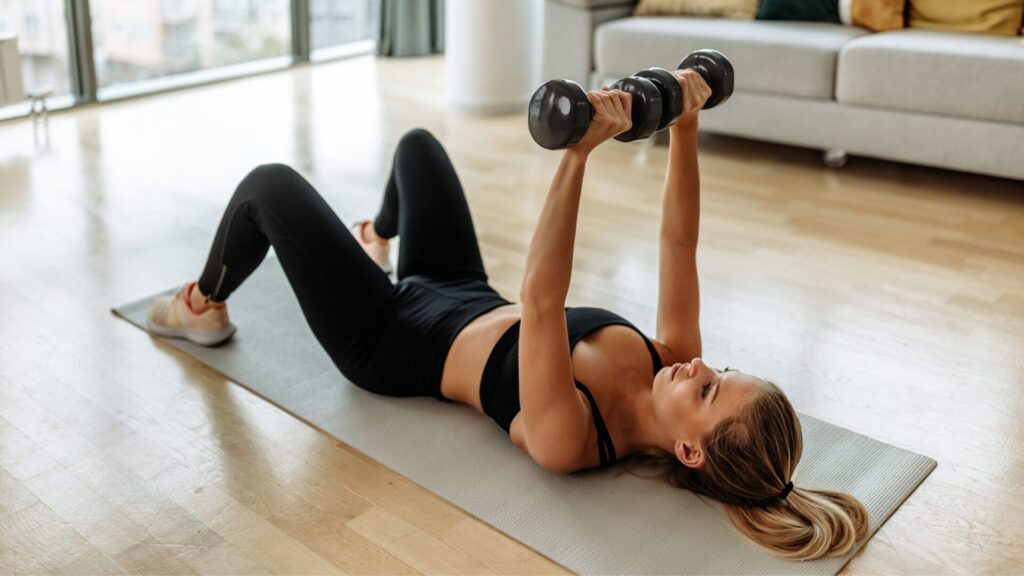
Tracking your progress is pivotal to keep your workout routine effective and your motivation high. There are several ways to gauge the effectiveness of your bicep-building program:
- Strength Gains: Regularly increase the weight or resistance in your bicep exercises. If you’re consistently able to do more reps or lift heavier, it’s a clear sign of progress.
- Muscle Size: Physically measuring your biceps with a measuring tape can give you an idea of muscle growth over time.
- Performance: If you find yourself performing exercises with greater ease and less fatigue, it indicates your biceps are growing stronger.
- Visual Assessment: Take regular photos of your biceps from various angles. Over time, these photos can provide a visual display of muscle growth.
Continual improvement is essential to prevent plateaus, avoid overuse injuries, and achieve long-term muscle growth. Here are ways to adjust your workouts for continuous improvement:
- Change the Routine: Alter your exercises or modify the sequence of exercises every 4-6 weeks to challenge your muscles in new ways.
- Increase Intensity: Gradually increase the weight or resistance to provide a new challenge and stimulate muscle growth.
- Alter Reps and Sets: Experimenting with the number of sets and reps can offer a new challenge. Try lifting heavier weights for fewer reps or lighter weights for more reps.
- Try Different Techniques: Techniques like drop sets, super sets, or slow negatives can intensify your workouts and spur growth.
- Incorporate Rest-Pause Training: After reaching failure, take a short rest, then continue the set. This technique can push your muscles beyond their usual limits.
Remember, muscle growth isn’t a linear process. It’s important to listen to your body and adjust your routine strategically to keep progressing. Consulting with a fitness professional can provide further personalized guidance.
Conclusion
In conclusion, building biceps at home is a process that requires consistent effort, proper technique, and strategic planning. It’s crucial to remember that muscle growth happens during rest periods, not during workouts, and that nutrition plays a vital role in muscle development. Avoid common mistakes such as incorrect form, lack of variation in exercises, overtraining, neglecting other muscle groups, and inadequate nutrition. Regularly track your progress through strength gains, muscle size, performance, and visual assessment, and adjust your routine to ensure continuous improvement. Starting your journey towards bicep growth may seem challenging, but with consistency, patience, and the right approach, you can achieve your fitness goals. Remember, there’s no rush – it’s a marathon, not a sprint. Start today, keep progressing, and the results will follow.



